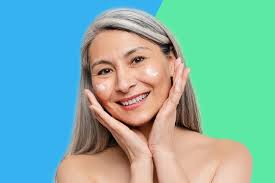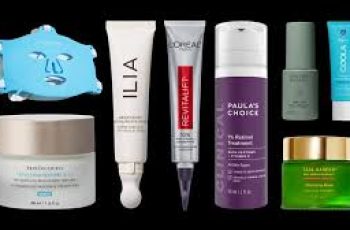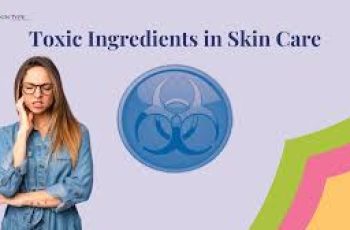
Understanding Glycation in Skin: Causes, Effects, and Prevention Strategies
Glycation is a process that occurs in the body when sugar molecules, such as glucose, bind to proteins like collagen and elastin, creating compounds known as advanced glycation end products (AGEs). This complex biochemical reaction has significant consequences for the skin, particularly in aging. The formation of AGEs over time contributes to wrinkles, loss of elasticity, and weakened skin structure, leading to an overall aged appearance. In this article, we’ll delve into the science of glycation, its impact on the skin, and how to prevent or manage its effects.
What is Glycation?
Glycation is a non-enzymatic reaction in which sugars (like glucose or fructose) bind to proteins or lipids without the involvement of enzymes. This process is similar to the Maillard reaction, the browning reaction that occurs when food is cooked or toasted, giving it a rich, browned color and flavor.
In the human body, the reaction can occur naturally over time, and when sugars bind to skin proteins like collagen and elastin, they form AGEs. These compounds can build up over the years, leading to damaged proteins that contribute to the breakdown of skin’s structural integrity.
The Role of Glycation in Skin Aging
Impact on Collagen and Elastin
Collagen is the most abundant structural protein in the skin, providing strength and firmness, while elastin is responsible for skin’s ability to bounce back after stretching. Glycation negatively affects both these proteins in the following ways:
1. Collagen Glycation
When sugars bind to collagen, they cause cross-linking between collagen fibers. This stiffens the collagen matrix, making it less flexible and unable to remodel properly. The result is weakened skin, which is more prone to wrinkles, sagging, and loss of firmness. Over time, the accumulated crosslinks impair collagen’s ability to function properly, further contributing to loss of skin elasticity.
2. Elastin Glycation
Elastin fibers are equally vulnerable to the effects of glycation. The sugar molecules attach to elastin and make the fibers more resistant to breakdown by elastase, the enzyme responsible for degrading elastin. As a result, abnormal elastotic material builds up in the skin, leading to a loss of skin’s elasticity—the ability to stretch and return to its original shape. This process results in skin that appears more stiff and less youthful.
Other Effects of Glycation on Skin
Glycation also triggers the production of free radicals and reactive oxygen species (ROS), which further damage collagen, elastin, and other skin cells. This oxidative stress accelerates the aging process by damaging cellular structures and promoting inflammation in the skin.
Signs of Glycation in Skin
Wrinkles and fine lines: Stiff, cross-linked collagen fibers lose their ability to stretch and regenerate, causing wrinkles to form more easily.
Sagging skin: Reduced collagen and elastin flexibility leads to skin that droops, particularly in areas like the under-eyes, jawline, and neck.
Loss of elasticity: The skin becomes less resilient and less able to “snap back” after being stretched, often leading to a more tired and aged appearance.
Uneven skin tone: Glycation can contribute to the formation of age spots or uneven pigmentation, as glycation impacts the structure and function of skin cells.
How to Prevent Glycation in Skin
While glycation is a natural part of aging, there are steps you can take to minimize its impact on your skin. Prevention strategies primarily focus on reducing the accumulation of AGEs and limiting the oxidative stress that exacerbates skin aging.
1. Control Blood Sugar Levels
The key driver of glycation is elevated blood sugar. By maintaining stable blood sugar levels, you can reduce the amount of glucose available for glycation to occur. To achieve this, consider:
Low-glycemic diet: Foods that cause a slow rise in blood sugar (e.g., whole grains, vegetables, lean proteins) help maintain better glucose control.
Exercise: Regular physical activity improves insulin sensitivity and helps regulate blood sugar.
Medications: Drugs like metformin, semaglutide (Ozempic, Wegovy), and tirzepatide (Mounjaro) can help control blood sugar and improve glycemic regulation.
2. Use Antioxidants
Antioxidants help to mitigate oxidative stress caused by free radicals and reactive oxygen species (ROS), which can exacerbate the glycation process. Key antioxidants for protecting your skin include:
Vitamin C: A potent antioxidant that helps neutralize free radicals and reduces oxidative stress.
Vitamin E: Another antioxidant that helps to protect the skin from oxidative damage.
Polyphenols: Found in ingredients like green tea, these can help protect skin from glycation and oxidative stress.
3. Limit UV Exposure
UV radiation from the sun can accelerate glycation by increasing the production of free radicals that interact with glycated proteins. UV exposure can also cause crosslinking between proteins and sugars, leading to more AGEs. To protect your skin:
Use broad-spectrum sunscreen daily to prevent UV-induced damage.
Limit sun exposure, particularly during peak hours when UV rays are strongest.
4. Use Anti-Glycation Ingredients
While there is no direct way to “undo” existing glycation, certain skincare ingredients may help reduce the formation of AGEs or support skin’s repair processes. Some active ingredients include:
Retinoids: Help promote collagen turnover and the removal of abnormal collagen fibers damaged by glycation.
Alpha Hydroxy Acids (AHAs): These exfoliants help slough off dead skin cells and can assist in eliminating damaged proteins from the skin’s surface.
Aminoguanidine and Carnosine: Both have demonstrated anti-glycation properties, potentially reducing the formation of AGEs.
5. Improve Skin’s Autophagy Process
Autophagy is the body’s natural process of breaking down and recycling damaged proteins. Skincare products and practices that boost autophagy may help the skin naturally remove damaged proteins like glycated collagen and elastin. While not all skincare products directly boost autophagy, some, like Alastin Regenerating Skin Nectar, are designed to stimulate skin regeneration and may help mitigate some of the effects of glycation over time.
Best Skin Care Products for Glycation
While no topical product can completely reverse the effects of glycation, certain skincare products can help reduce the appearance of AGEs and improve overall skin health. Some popular choices include:
1. Alastin Regenerating Skin Nectar
This product is specifically designed to support the skin’s natural repair processes, stimulate collagen turnover, and address damage from environmental stressors such as glycation. By improving the skin’s natural regenerative abilities, it can help reduce the appearance of signs of aging caused by glycation.
2. Retinoids (Retinol, Tretinoin)
Topical retinoids help increase cell turnover and the remodeling of damaged collagen, promoting smoother, firmer skin. Retinoids are often included in anti-aging products for their ability to fight the visible effects of glycation.
3. Vitamin C Serums
Vitamin C is an antioxidant that can protect the skin from oxidative damage and may help reduce the formation of AGEs. It’s an essential part of any anti-aging regimen that addresses glycation.
4. Peptide-Based Products
Peptides support collagen production and can help the skin rebuild after damage. Some peptides, like copper peptides, have been shown to encourage skin healing and improve elasticity, counteracting some effects of glycation.
Conclusion
Glycation plays a significant role in the aging of the skin, contributing to the breakdown of collagen and elastin, leading to wrinkles, sagging, and loss of skin’s elasticity. Although glycation cannot be fully reversed, several strategies can help prevent or mitigate its effects. Maintaining stable blood sugar levels, using antioxidants, protecting your skin from UV radiation, and incorporating specific skincare ingredients like retinoids and peptides can all help maintain skin’s youthfulness and vitality. By adopting a multi-faceted approach to glycation prevention, you can protect your skin from the detrimental effects of this natural yet aging process.


